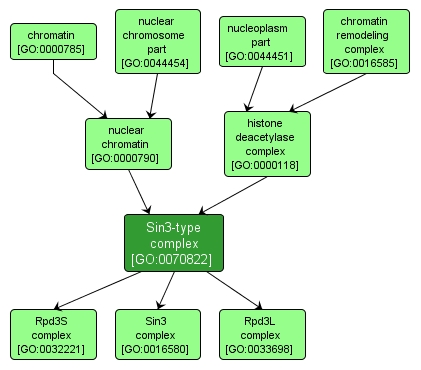| Desc: |
Any of a number of evolutionarily conserved histone deacetylase complexes (HDACs) containing a core consisting of a paired amphipathic helix motif protein (e.g. Sin3p in S. cerevisiae, Pst1 in S. pombe or Sin3A in mammals) at least one class I histone deacetylase (e.g. Rpd3p in S. cerevisiae, Clr6 in S. pombe, or HDAC1 and HDAC2 in mammals), and at least one WD40 repeat protein (e.g. Ume1p in S. cerevisiae, Prw1 in S. pombe, or RbAp46 and RbAp48 in mammals). These complexes also contain a variable number of other proteins that direct histone binding, DNA binding, or add other functionality to the complex. |














